New Neighborhood Code
What’s the New Neighborhood Code?
The Town Board adopted the New Neighborhood Code in November 2020.
The 2014 Town of Ithaca Comprehensive Plan envisions compact, walkable mixed-use neighborhoods in emerging growth areas close to major employers and activity hubs.
The New Neighborhood Code is the next step in bringing the community’s vision to life. It’s a form-based zoning and design code that serves as an instruction manual for planning and building great new neighborhoods — places that are an integral part of the Town, with a wide variety of housing choices; networks of interconnected, pedestrian-friendly streets; main streets or village squares with shops and services; and parks and gathering places a short walk away.
The New Neighborhood Code is user-friendly, using plain English and colorful graphics to describe everything from how to lay out streets and blocks to putting up a fence. It has a collaborative master planning process to ensure new neighborhoods are planned as a unified whole, not piecemeal. It also allows those new neighborhoods to grow and evolve naturally over time.
The New Neighborhood Code offers an alternative to the Town’s current development regulations, with tools that are better suited to building new complete neighborhoods. The Town’s current zoning and subdivision regulations will still apply in areas that will keep a more suburban or rural character.
Download the New Neighborhood Code
News & Events
1 November 2021: South Hill new neighborhood regulating plan
The South Hill Traditional Neighborhood Development (TND) regulating plan will be the first project under the New Neighborhood Code. Visit the South Hill TND page to learn more.
31 October 2021: the trick-or-treat test
A neighborhood has good urban design if it’s inviting for Halloween trick-or-treaters. Places with walkable, safe, connected streets, and closely spaced homes that are welcoming to those walking by, pass the trick-or-treat test. Specifically, places with these six traits:
- Lots of doors within a short walking distance, for more candy per mile.
- Doors you can find, which parents and passers-by can easily see.
- Comfortable sidewalks, so kids don’t have to walk in the street or trot across lawns between houses.
- Buildings are fairly close to the sidewalk, which puts more eyes on the street, and makes for a more welcoming experience. Also, again, less walking for more candy.
- Houses with front porches or stoops that serve as stages for showing off Halloween costumes.
- Well-connected streets, so there’s less backtracking and less likelihood of getting lost.
Every year, hundreds of families in the Ithaca area take their kids to the Fall Creek neighborhood for trick-or-treating. Why? See 1 through 6 above. The New Neighborhood Code was written to create the kinds of places that pass the trick-or-treat test in the same way, giving kids a safe and memorable hunting ground for Halloween candy.
Stay in the loop!
Check back here for news and updates about the New Neighborhood Code and traditional neighborhood development projects. We’ll also be posting occasional links to relevant articles online, and answers to interesting questions.
FAQ’s
What is the New Neighborhood Code?
The New Neighborhood Code (NNC) is a form-based zoning code that enables traditional neighborhood development (TND) in areas where the Town’s 2014 Comprehensive Plan envisions compact, walkable mixed use neighborhoods with a variety of uses, housing types, and parks. The NNC has rules to shape the form and character of these new neighborhoods. It’s more precise about design elements that are important to the community, and makes it easier to put property to productive use or build more affordable housing in certain parts of the Town. It also has a collaborative master planning process so new neighborhoods are planned as a unified whole, not piecemeal.
Is my zoning going to change?
No. The current zoning map won’t change when the Town adopts the New Neighborhood Code. The current zoning code won’t be going away. The New Neighborhood Code allows an alternative form of zoning that can be used — after a thorough public participation and review process — for new traditional neighborhood development projects in certain parts of the Town.
Why did the Town adopt the New Neighborhood Code?
The Town’s Comprehensive Plan recommends traditional neighborhood development in certain parts of the town where current or planned infrastructure, proximity to employment and activity centers, and other factors make them appropriate for future growth.
The Town’s current zoning and subdivision regulations were written with a lower density suburban and rural environment in mind. They mandate rigid separation of uses and housing types. These regulations don’t work well for building neighborhoods with a mix of different uses or housing types. The Town needs a different approach for that kind of development, and that’s where the New Neighborhood Code comes in.
Where does the New Neighborhood Code apply?
The New Neighborhood Code isn’t tied to any specific parts of the Town. The Comprehensive Plan recommends traditional neighborhood development in emerging growth areas close to major employers and activity hubs. This includes the East Hill Plaza area, the Danby Road/King Road intersection area south of Ithaca College, and parts of West Hill from Bundy Road to south of Mecklenberg Road (NY 79), near the city boundary, and along Trumansburg Road (NY 96) south of West Hill Drive.
Will the Town still have suburban style or cluster development in the future?
Yes. The New Neighborhood Code just allows another form of development in some areas. The rules and new zones of the New Neighborhood Code apply only for new TND projects, not elsewhere in the Town.
Traditional neighborhood development and its benefits
What’s traditional neighborhood development?
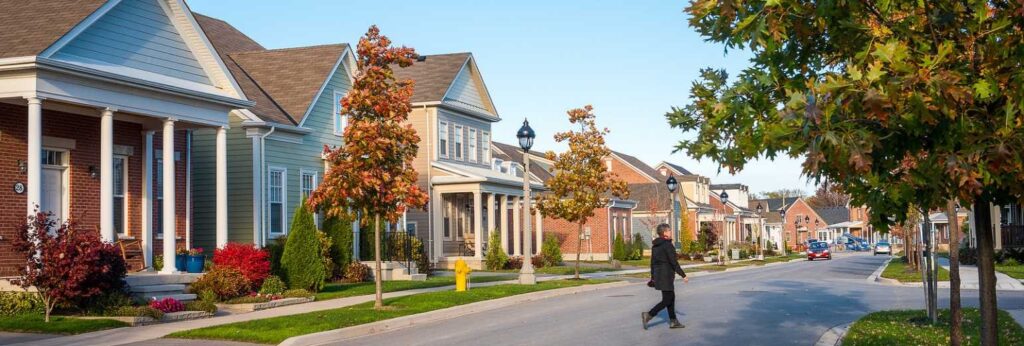
Traditional neighborhood development (TND) is a planning concept that reinterprets and applies the development pattern and design elements of vibrant pre-WWII era neighborhoods throughout America – like Fall Creek and Belle Sherman in the City of Ithaca – to new development projects. TND has a compact form; is built on a foundation of pedestrian friendly, human scale streets and public spaces; offers a wide range of housing types; and puts parks, gathering places, and storefront and civic uses closer to where people live. Over time, development following the New Neighborhood Code will form a complete neighborhood, not just be another subdivision.
How will traditional neighborhood development make the Ithaca area a better place to live?
Traditional neighborhood development:
- Broadens the choices of neighborhood settings, lot sizes, and housing types and styles for current and future residents.
- Offers a setting where building entry level and middle market housing for residents can be economically viable.
- Slows urban sprawl, with compact neighborhoods that offer more options for housing and business locations closer to the places people work and do their errands.
- Uses less land, energy, materials, and natural resources, compared to the same amount of development in a suburban or rural setting.
- Preserves farmland and open space, by having an alternative to new residential subdivisions and frontage lots in rural areas.
- Reduces dependence on a car, and encourages walking and using public transit.
- Creates less traffic than conventional development, by being closer to workplaces, shopping centers, and services, than development in outlying areas.
- Creates a critical mass to support local-serving shops, restaurants, and other businesses; and more frequent TCAT service.
- Is built to share the strong sense of place and community that many suburban and urban neighborhoods built before the mid-20th have.
How will streets in a TND be different than what’s in a typical subdivision?
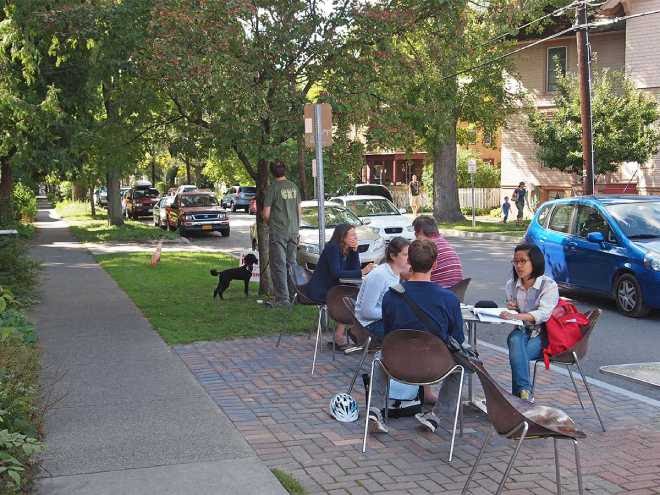
Streetscapes will be interesting and inviting; “public living rooms” of sorts.
The New Neighborhood Code calls for street networks with short interconnected blocks, instead of long blocks and cul-de-sacs. This creates more ways to get from Point A to Point B, and prevents “complexes” or “pods” that feel separate from the rest of the neighborhood.
A TND will have complete streets that safely accommodate all its users — drivers, pedestrians, cyclists, and public transit riders. Streets will have curbs, planted tree lawns or bioswales, and sidewalks. Blocks may have alleys, which take up less space than individual driveways, for parking, garage, and utility easement access.
Will the code encourage more affordable housing?
The New Neighborhood Code makes it easier to build a diverse range of housing types, from single family houses to loft apartment buildings, and what some call missing middle housing in between — like smaller single family houses, two-flats, paired houses and fourplexes, townhouses, co-living houses, and live-work housing.
The NNC can’t control the cost of labor or building materials, but it can help builders and developers use those resources more efficiently. Smaller lots, less road and utility line length for each housing unit, and less land devoted to parking all help lower building costs, compared to conventional suburban development.
Owner-occupied detached houses can have a small accessory dwelling unit (ADU) or in-law apartment by right. An ADU provides affordable housing for the tenant, and the rental income helps the owner pay their mortgage. A tiny house can be an ADU if it meets building code requirements, has permanent utility connections, and doesn’t have wheels or a trailer chassis.
Will the code encourage more attractive development?
The New Neighborhood Code has reasonable architectural standards, to ensure each building contributes to a harmonious community fabric. Standards address type and use of different exterior materials, trim, roof form, window and door area, blank wall length, mechanical equipment and service area screening, and garage location. Architecture can be traditional or contemporary; design standards don’t impose specific styles. However, the NNC doesn’t allow houses or other buildings that could look too plain, body, or utilitarian It also doesn’t allow chain or franchise-style architecture.
The New Neighborhood Code also has design standards for landscaping, parking, fences, and utility and service area screening. All utilities in a TND must be underground.
Will the code help protect natural resources and open space?
The New Neighborhood Code indirectly protects farmland and natural resources in outlying areas, by redirecting development to more compact settings closer to the City of Ithaca and existing developed areas. The NNC also requires a variety of parks throughout a TND. The NNC recommends placing parks and preserves in areas with natural features like creeks, ponds, and wooded areas.
How the New Neighborhood Code works
What’s a form-based zoning code?
Conventional or “Euclidean” zoning, like what the Town has now, is based on separating different uses and development densities. Conventional zoning focuses on individual lots, and the location, intensity, and impacts of uses and buildings. It accommodates different uses by separating them from each other, and limiting them to certain zones.
A form-based zoning code uses neighborhood character and building form as its organizing principle. A form-based code addresses the form of buildings, streets, and public places, and the relationships between them. For example, it considers how buildings line up with each other to frame streets and public spaces, and the types and usage of building elements that contribute to attractive and lively streets. It accommodates different uses and site features by considering how they complement their surroundings. Form-based zoning also aims to use land efficiently.
Are form-based codes easy to use?
Form-based codes are easier to use than a conventional zoning code. The New Neighborhood Code was written and arranged with user friendliness in mind. Like anything new and different, though, there can be a learning curve for those used to working with a conventional zoning code.
The New Neighborhood Code uses graphics, tables, bulleted lists, and plain English in the active voice to explain its standards. Text in the code is at a 9th grade (freshman) reading level, with no legalese. Because some jargon is unavoidable, an illustrated glossary explains most “plannerese”.
The New Neighborhood Code is arranged by development scale and topic – from designing a neighborhood down to building on a lot, and what uses can be on a lot. Each chapter starts with a “how to” guide. Regulations are laid out in a step-by-step approach, like a recipe or instructions for ready-to-assemble furniture. Those using the code won’t have to page through a lot of unrelated information to find the rules that apply to their project, or deal with surprise regulations tucked away in some unrelated chapter or section.
What else is different about the New Neighborhood Code? Will the New Neighborhood Code have any new zones?
The New Neighborhood Code has four new zones, called neighborhood transect (NT) zones. Transect zones reflect slices across a range of human habitat, with a gradual transition from the least dense to most developed parts of a neighborhood. Transect zone names describe the development character of the area.
Neighborhoods, Buildings, & Zones
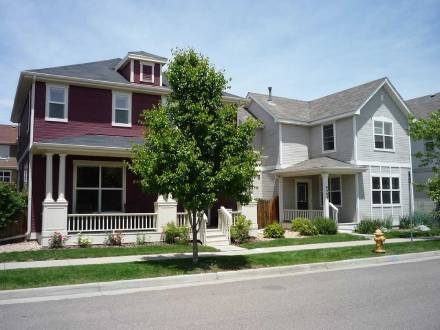
NT-3 neighborhood edge:
detached houses, duplexes, and complementary uses, in a residential setting.
NT-4 neighborhood general:
variety of detached, attached, and multi-unit housing types and complementary uses, in a compact form, within walking distance of more intensively developed neighborhood transect zones.
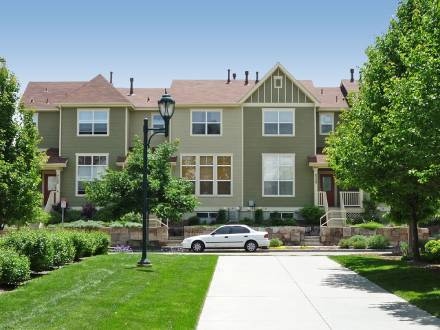
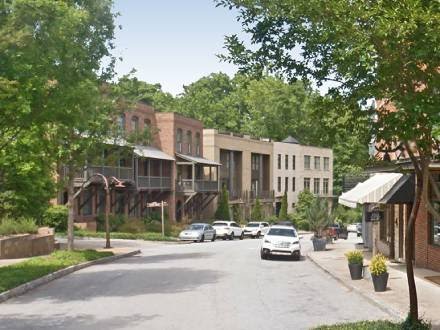
NT-4u neighborhood urban mix:
attached and multi-unit housing, with some complementary commercial and service uses, in a more urban setting.
NT-5 neighborhood center:
mix of attached and multi-unit housing; neighborhood office, commercial, and service uses; and complementary civic uses, in a compact village center or Main Street setting.
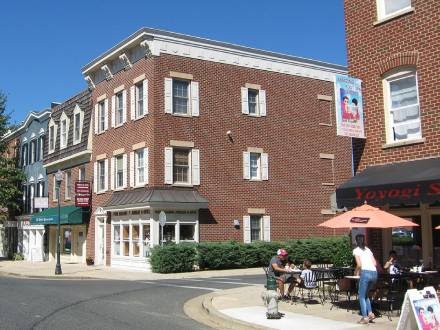
The New Neighborhood Code defines three neighborhood types – mixed use village, intermediate neighborhood, and town center. The NNC allows a different mix and percentage area of transect zones for each of the neighborhood types, so overall character and development density best fits the location.
What kinds of buildings does the Code allow?
The New Neighborhood Code defines 16 different building types. Permitted building types, lot size, and building height and placement vary, depending on the transect zone.
- Detached house (1,500 ft²/ ±140 m² gross living area or larger)
- Small detached house (smaller than 1,500 ft² / ±140 m²)
- Duplex (both housing units have the same owner)
- Paired house (side-by-side duplex where each side has a separate owner)
- Cottage court (group of small detached houses around a central courtyard)
- Multi-unit / collective house (building that looks like a large house, with co-housing or 3 or 4 apartments/condos)
- Townhouse (row of houses connected by party walls)
- Small apartment building (building with 5 to 12 apartments/condos)
- Apartment building (building with 13 or more apartments/condos)
- Courtyard apartment building (building with 13 or more apartments/condos, with a central courtyard)
- One story storefront building (one story building for a shop, restaurant, office, or similar use)
- Mixed use storefront building (building with storefronts on the ground floor, and offices, hotel rooms, or apartments on upper floors)
- Commercial building (building with or without storefronts, built just for commercial uses)
- Large footprint building (building with a supermarket or other larger retail or commercial use on the ground floor)
- Neighborhood service station (gas station/convenience store, with the building in front, and fuel pumps in the back)
- Civic building (school, place of worship, community center, or building for another specific civic use)
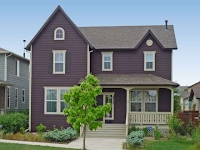
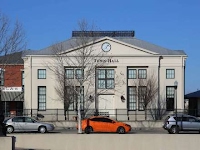
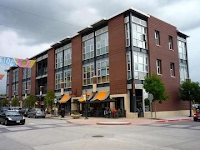
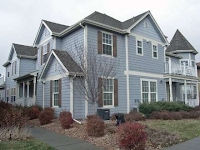
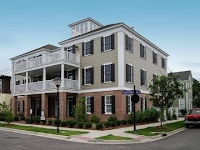
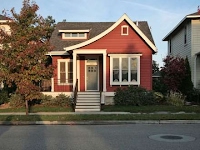
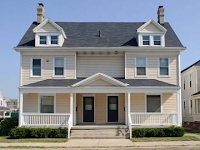
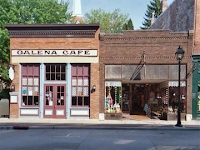
A subdivision plat will assign a specific building type for each lot. For example, if a subdivision assigns a lot for a row of townhouses, someone can only build townhouses and related outbuildings (like garages or garden sheds) on it; not an apartment building, duplex, or something else. This ensures that a new neighborhood will have a variety of building and housing types, and residents know what kinds of buildings will go up nearby. Building type assignments aren’t permanent, so a TND can evolve naturally with time, just like older neighborhoods in the City of Ithaca and elsewhere.
What’s the zoning process for a TND?
To rezone land for TND, the Town Board would adopt a regulating plan. A regulating plan is a master plan showing the location and types of transect zones, streets, parks, civic uses, and other features.
A regulating plan can apply to a property with one owner, or a group of adjacent properties with different owners. Neighborhood design standards in the New Neighborhood Code will ensure the area is planned as a unified whole. If one property owner wants to plan and develop a TND before neighboring property owners are ready, the NNC allows a smaller partial TND. The layout of a partial TND must have provisions to make it a seamless part of any future neighboring TND.
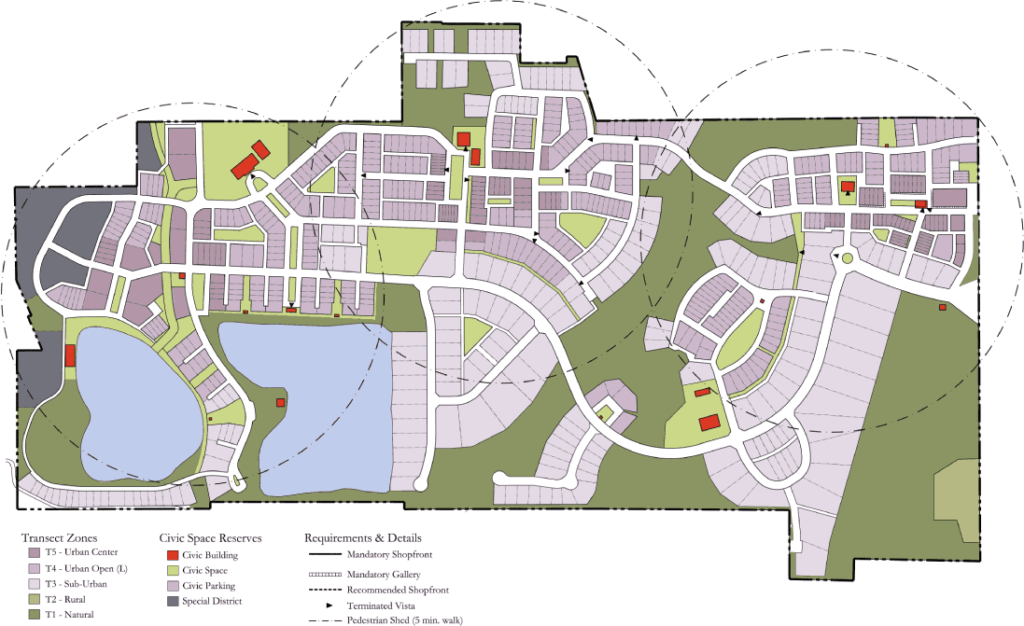
What kind of public involvement will there be for these new neighborhoods?
The New Neighborhood Code requires a charrette for projects over 20 acres, or smaller projects that might benefit from a collaborative design process. A charrette is an open and collaborative multi-day workshop, where a professional design team works with stakeholders and residents to creates a plan for a TND project. The resulting plan is advisory, but it must be workable and buildable, and follow NNC neighborhood design standards. A regulating plan (see the question above) should closely follow the plan from the charrette.
Any Planning Board and Town Board public hearing involving a new TND will allow public participation, as with a large subdivision or housing development today,
Will building in one of these new neighborhoods involve a lot of red tape?
The New Neighborhood Code prescribes architecture, landscaping, screening, and parking design standards. This provides more certainty than with conventional development, where design requirements are often negotiated and applied on a case-by-case basis.
Because the New Neighborhood Code has clear, prescriptive, yet flexible standards, fewer types of planning or development actions need Planning Board approval compared to conventional zoning. For projects that need Planning Board approval, the New Neighborhood Code’s standards will make decision making easier and more predictable.
I have even more questions. Who can I talk to?
Give us a call (607) 273-1747, or stop by Town Hall. The Town of Ithaca Planning Department is open from 8:00 AM to 4:00 PM, Monday through Friday. You can also email us at planning@townithacany.us
 New Neighborhood Code (17.1 MB .pdf: best image quality)
New Neighborhood Code (17.1 MB .pdf: best image quality)